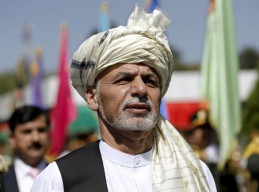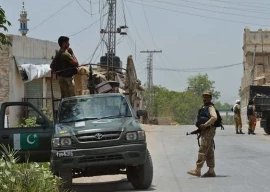
This all sounds good. Only in sharing evidence lies the way forward. But do the two countries share each other’s perceptions on the sources of terrorism too? The elimination of Shahidullah Shahid and Saeed Khan Orakzai in US drone strikes on targets in eastern Afghanistan, as well as the arrest by American marines in October 2013 of Lateefullah Mehsud, an aide to Hakimullah Mehsud, are the oft-quoted examples that support the Pakistani perception. It was the Americans who helped Pakistan out — by taking the TTP out and wresting Mehsud from the National Directorate of Security (NDS) officials and turning him over to us. Afghan NDS officials had then told the Americans that Mehsud was in Kabul for a coordination meeting — a clear hint that the TTP was serving as a proxy instrument for Afghan intelligence. The telephonic intercepts during the attack on the Army Public School last December pointed to the same conclusions and supported the Pakistani claims about the TTP’s Afghan bases.
The Afghans, on the other hand, continue to believe that much of the violence they endure daily is based in Pakistan. Quetta, Peshawar and Islamabad are the oft-quoted metaphors used to underscore the presence of Afghan Taliban leaders here. The selection of Mullah Mansoor as the new Taliban chief also took place on the outskirts of Quetta, claim the Afghans. As I have covered Afghanistan from 1987 to date, I can fully empathise with the way those living in Kabul view Pakistan’s role in the violence that the capital has experienced since the mid-1980s; for all those who had stayed put in the capital in all those adverse years, all the trouble — the stinger missiles, the mujahideen, the Taliban regime — originated in Pakistan. For them, the source of terrorism even today is based east of the Durand Line.
To break out of the current logjam, both countries need to find a middle ground. The entire Pakistani leadership must recognise the pain and misery that the mujahideen (many of whom are now part of the Afghan government and parliament) and the Afghan Taliban have piled on Kabul and other parts of Afghanistan since the 1980s. For them, the source of this is rooted in the Pakistani establishment, but little do they acknowledge that Pakistan is now busy fighting its own godzillas, who have targeted the higher-ups of the establishment. Controlling many of these monsters is as difficult as it has been for the 131,000 US-Nato and 350,000 Afghan National Security Forces to contain the Taliban insurgency.
The Afghans should also dispassionately consider the internal odds facing their country. The proponents of the war economy (who continue to benefit from conflict), the massive institutional corruption (exposed by the US Special Inspector General for Afghan Reconstruction and the Independent Joint Anti-Corruption Monitoring and Evaluation Committee), rampant crime, geo-political factors (Indo-Pak animosity), anti-reconciliation lobbies (greedy, ruthless warlords) and the over 4,000 monthly attrition rate of the ANSF have all combined to make life difficult for Ghani and the reconciliation process extremely bumpy. Only dispassionate engagement — not brinkmanship — can guide the two countries towards peace.
Published in The Express Tribune, September 23rd, 2015.
Like Opinion & Editorial on Facebook, follow @ETOpEd on Twitter to receive all updates on all our daily pieces.








































COMMENTS (3)
Comments are moderated and generally will be posted if they are on-topic and not abusive.
For more information, please see our Comments FAQ